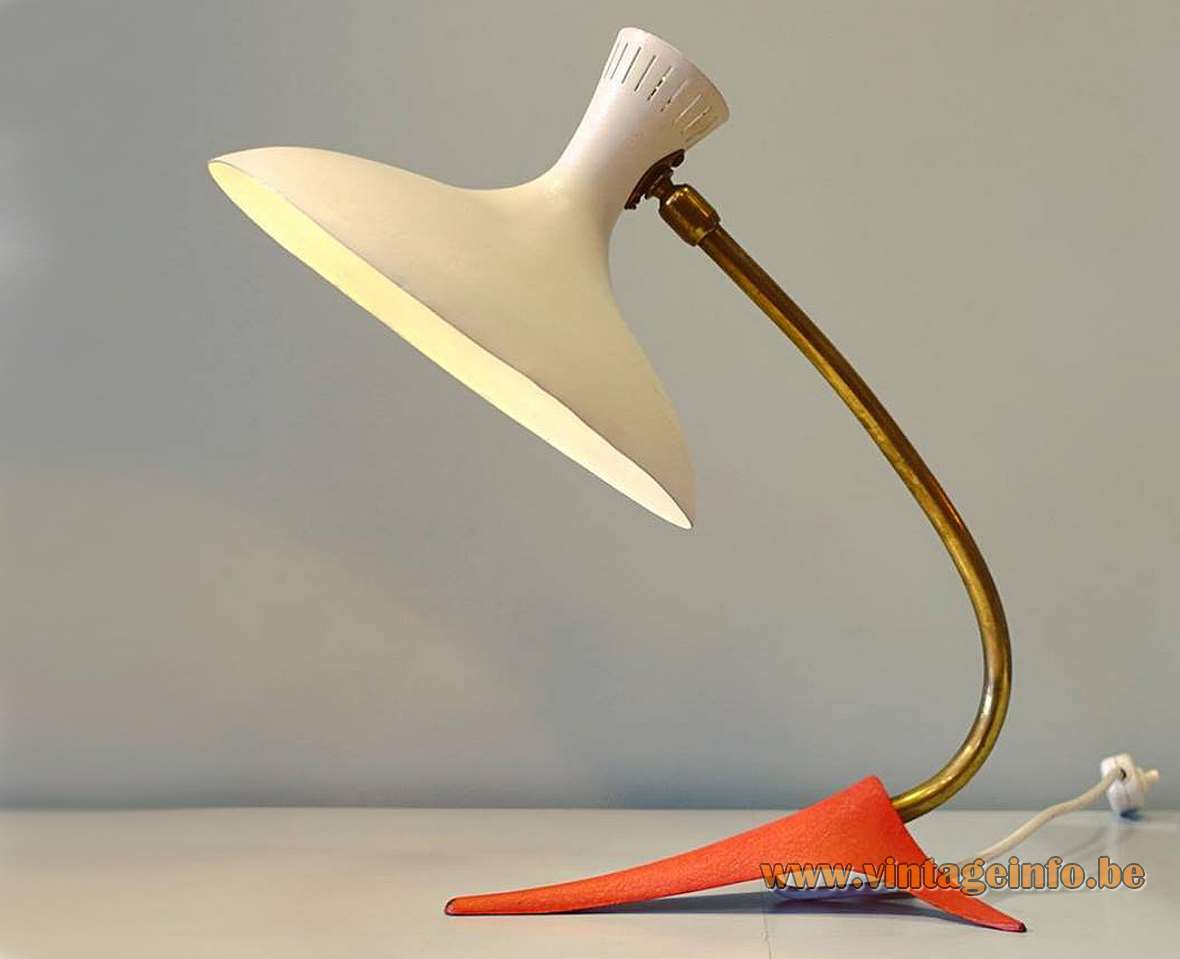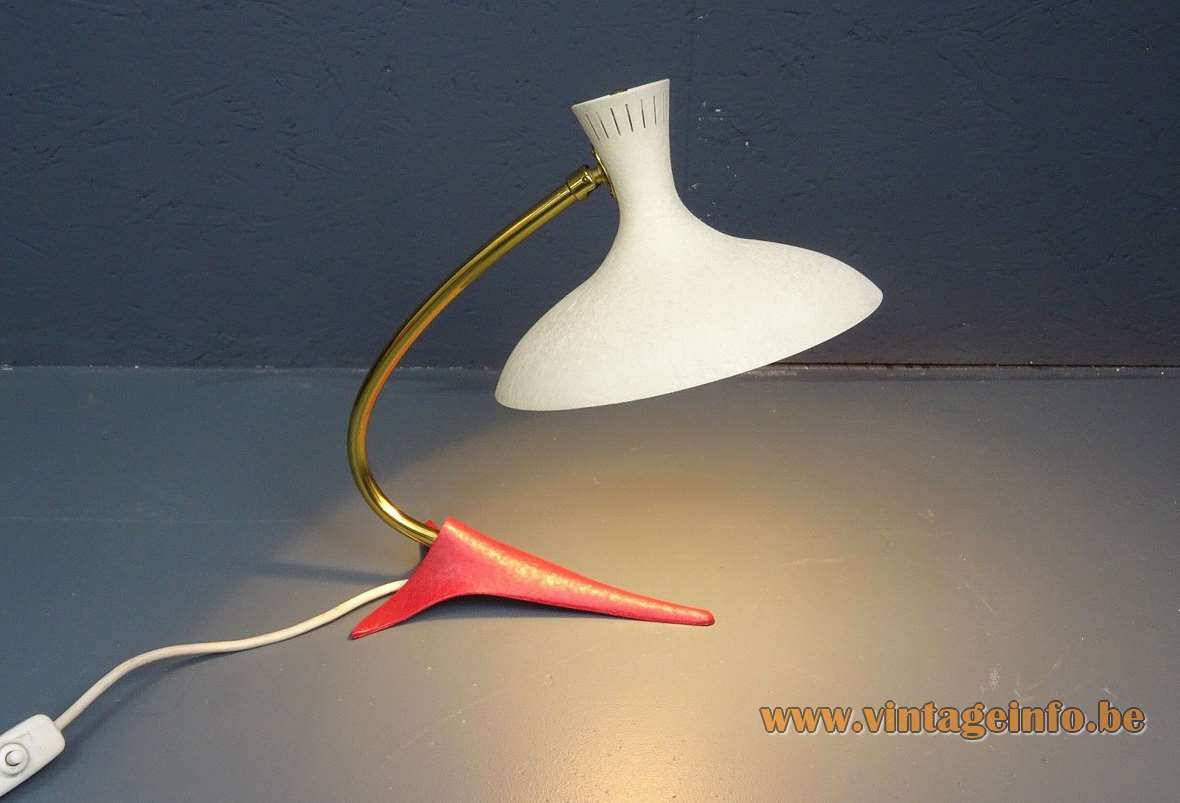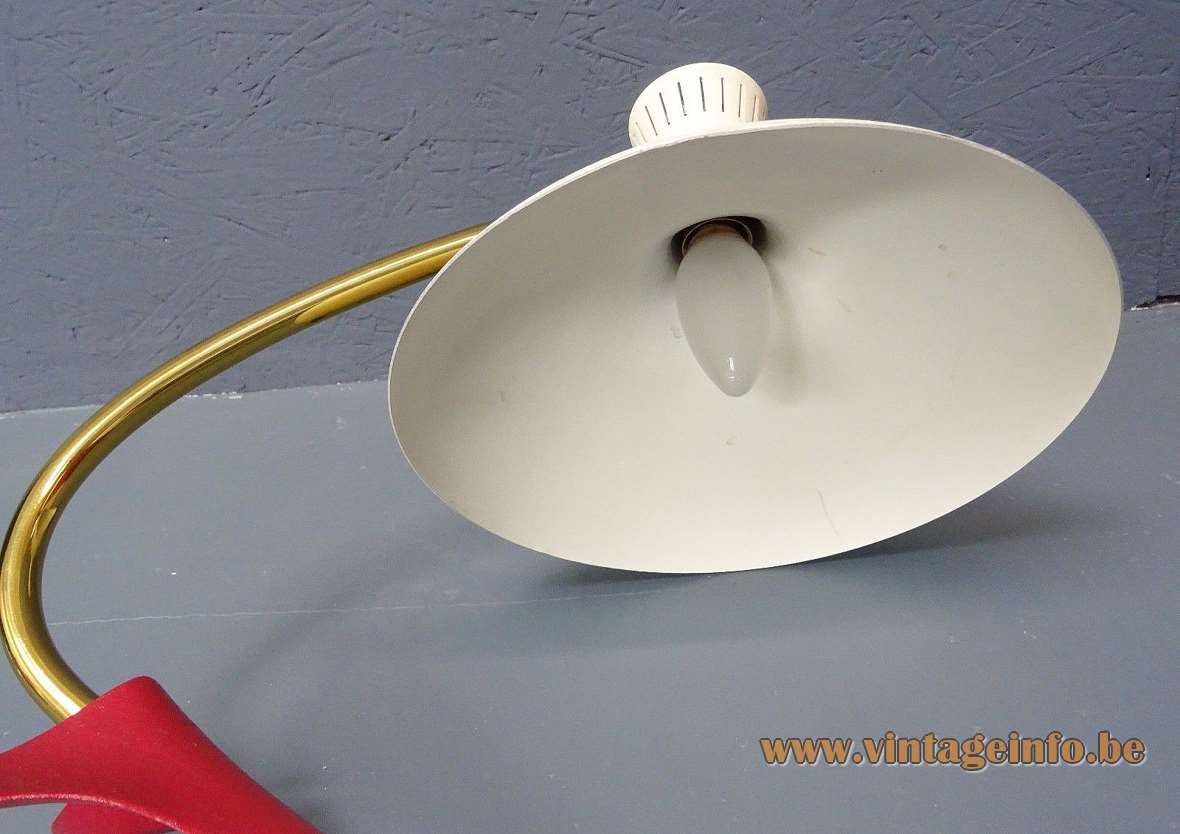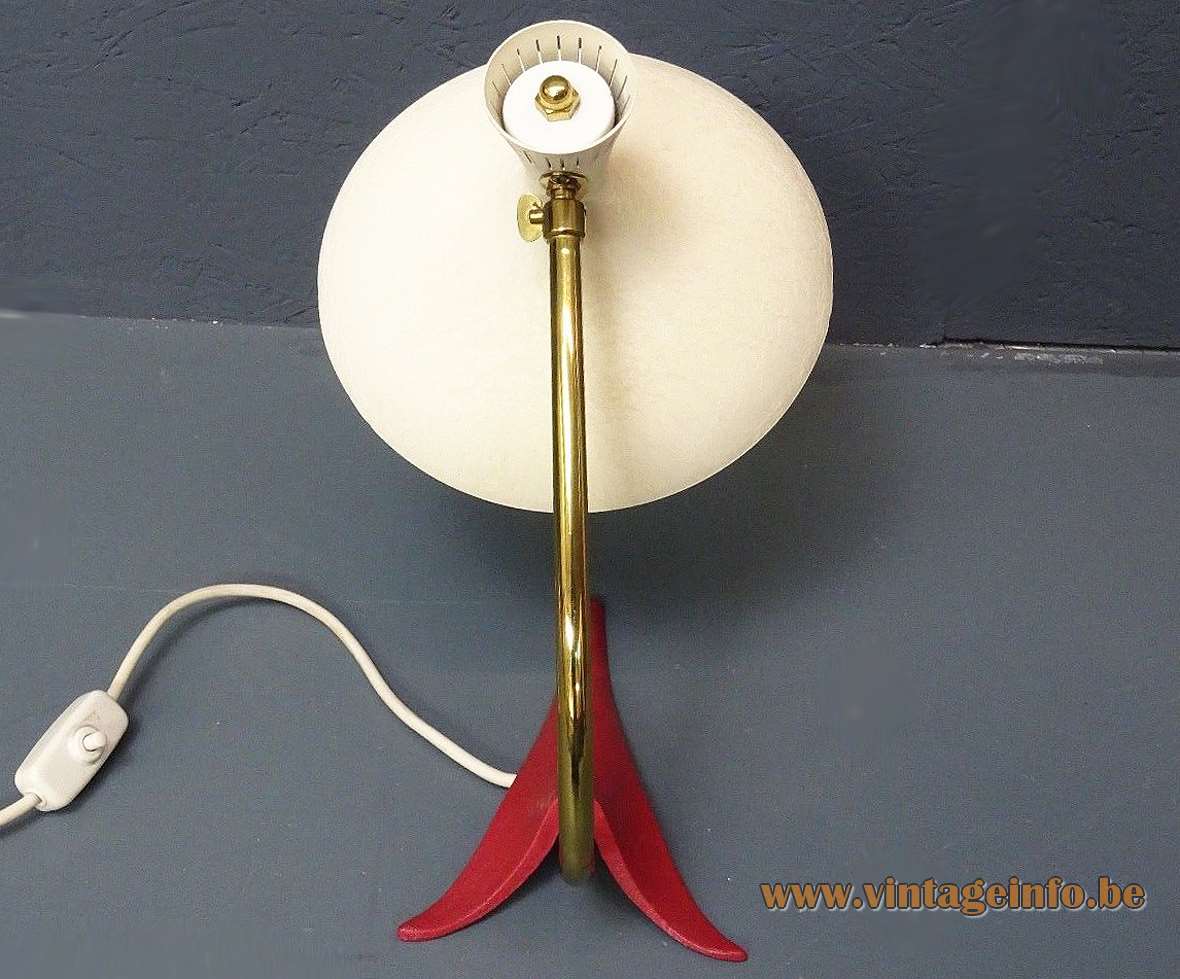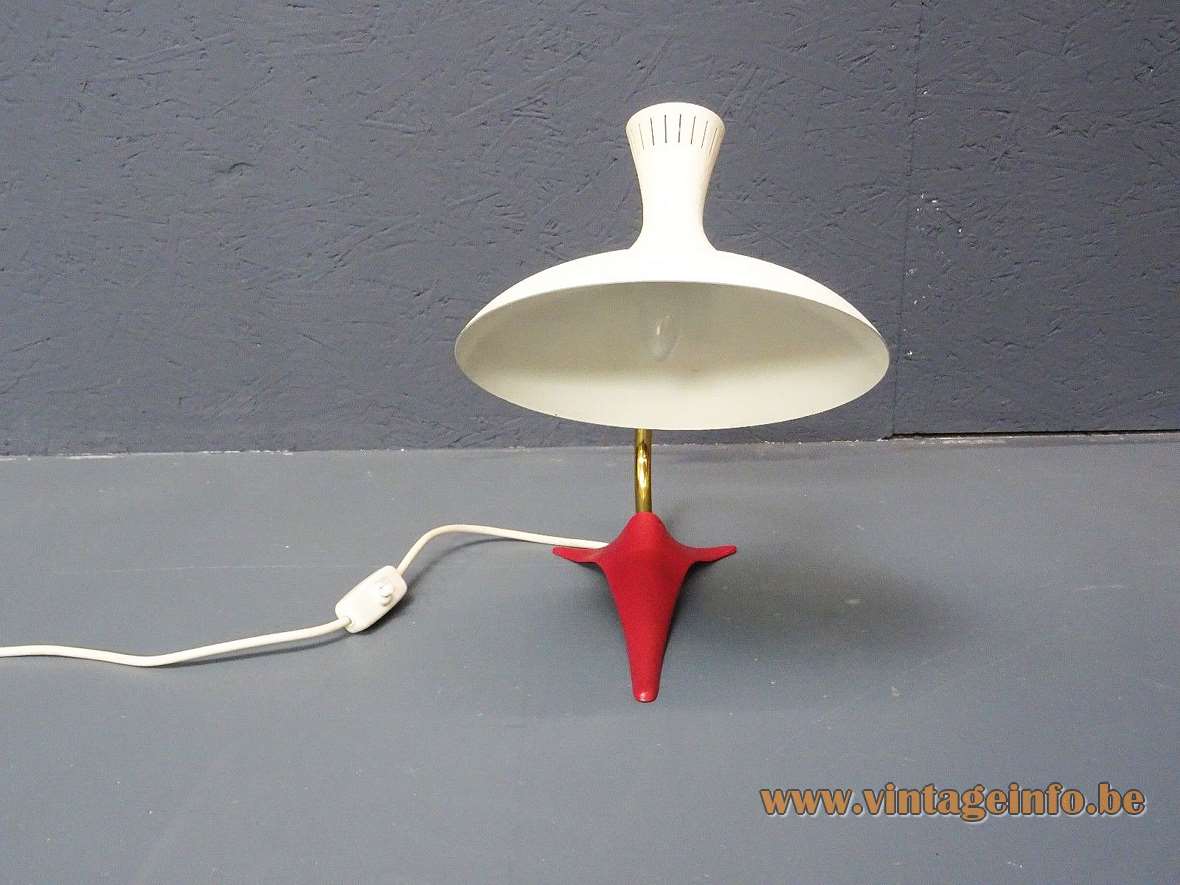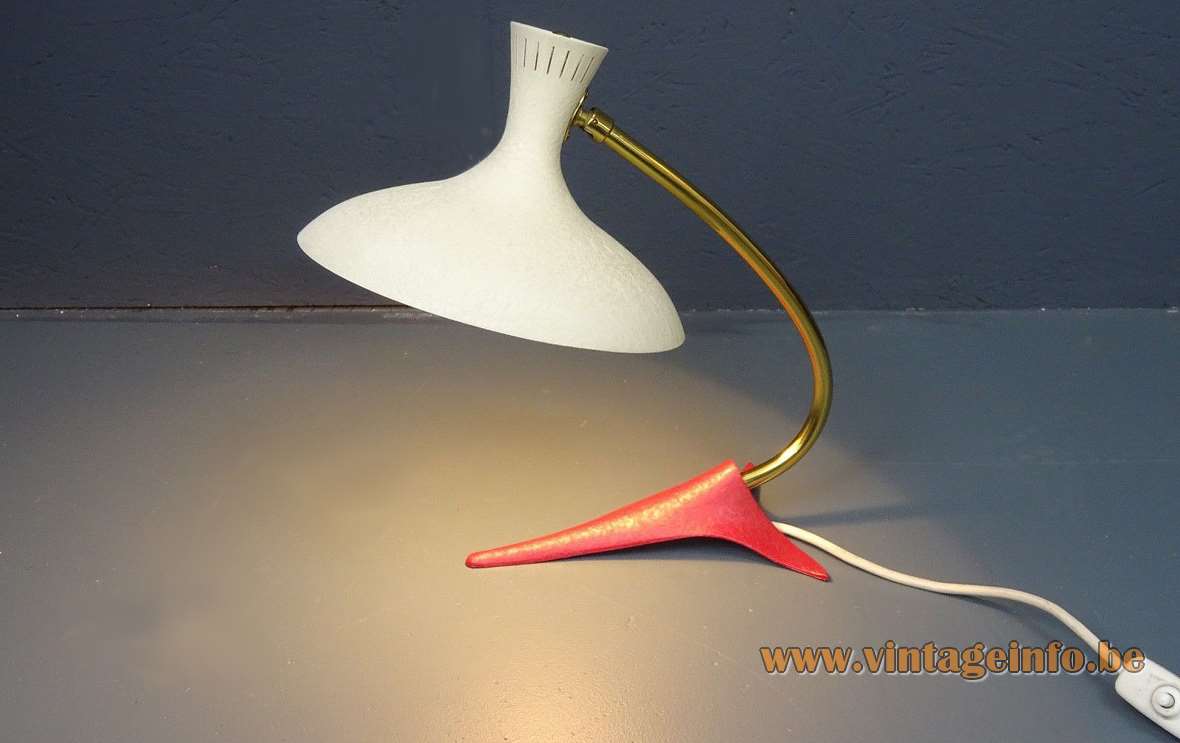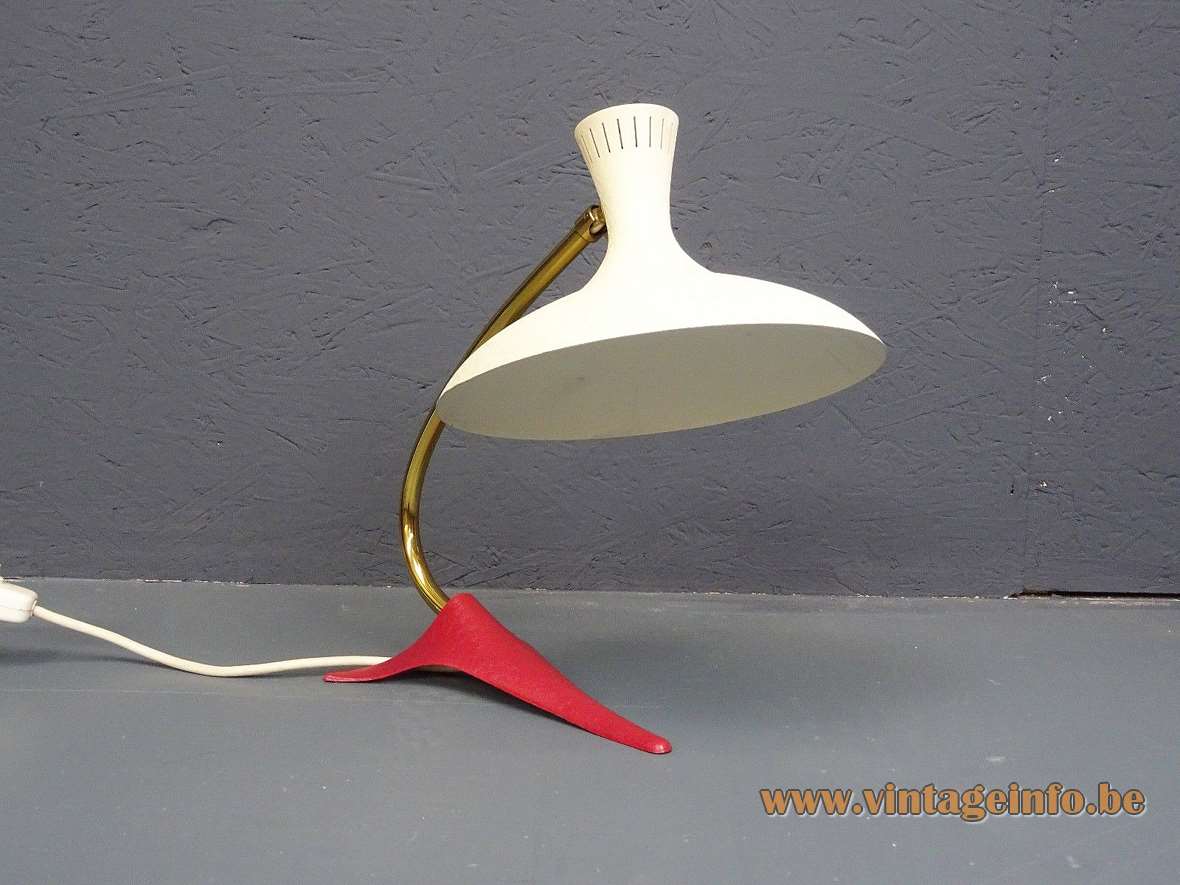1950s Cosack Diabolo Desk Lamp
Materials: Orange-red cast iron tripod crowfoot base, painted with wrinkle paint. Curved brass rod. Vanilla-cream, white aluminium lampshade, painted white inside. Brass screw and parts. Brass E27 socket.
Height: 34 cm / 13.38”
Lampshade: ∅ 24 cm / 9.44”
Width: 35 cm / 13.77”
Base: 25 cm / 9.84”
Electricity: 1 bulb E14, 1 x 40 watt maximum, 110/220 volt.
Any type of light bulb can be used, not a specific one preferred.
Period: 1950s, 1960s – Mid-Century Modern.
Designer: To be appraised.
Manufacturer: Gebrüder Cosack, Neheim-Hüsten, Germany – attributed.
Other versions: This 1950s Cosack diabolo desk lamp exists in a few variations. The diabolo lampshade is used for many desk lamps produced by Cosack, also for a pendant lamp. Often said that it is a design by Louis Kalff (Philips), but those are false assumptions.
Cosack Leuchten
The Gebrüder Cosack (Gecos) company was founded in 1848 as a metal processing plant in Neheim-Hüsten, Germany by Egon, Friedrich and Theodor Cosack together with Gottliebe Tappe. It was named Metallwarenfabrik Tapp + Cosack. In the beginning they made liturgical items, crosses and upholstery nails made of brass and they also produced kerosene lamps. Later the company came to the production of electric lamps.
After the Second World War Cosack pursued a modern direction. A best seller were copper lighting for restaurants. It is said that the company was declared bankrupt in 1984, but the last catalogue I have (1989 -1990) was published in 1989.
Best known designers: Gottfried Stürzenhofecker, K. H. Kinsky, Hans Wilfried Hegger, Hans-Joachim Groth, Burkhard Panteleit, Joachim O. Becker, Prof. Friedrich Becker, Waldemar Rothe and Jan Armgardt.
Gebrüder Cosack (Gecos) received 15 iF Design Awards.
Diabolo
Diabolo is the name given to the shape of the lampshade. The diabolo lampshades were very popular in the 1950s. You can find several examples on Vintageinfo.
The diabolo, some yo-yo, has its origin in China. It’s a double-coned bobbin that can be twirled, tossed, and caught on a string secured by two sticks, one held in each hand. The first diabolo’s were made of bamboo and they made some whistling sound.
In the eighteenth century, the diabolo became known in England and France. The term “diabolo” was made up by French engineer Gustave Phillippart, who developed the modern diabolo in the early twentieth century and he was re-released. Since then, he has been widespread.
BJB
The socket of this desk lamp was made by BJB. BJB is Brökelmann, Jäger and Busse, BJB GmbH & Co. KG. The BJB company was founded in 1867 and started with petroleum lighting. The company still exists. Today they produce LED lamps, terminal blocks and connectors, lamp holders for conventional lighting and switches. They are active in the whole world. BJB GmbH & Co. KG is located on Werler Strasse 1, 59755, Arnsberg, Germany.
VLM Components
The switch was made by VLM Components. VLM Components was founded in 1945 in Buccinasco, a small village near Milan, Italy. VLM Components is part of the Relco Group, founded in 1967. Today they are the owners of the brands Relco, Leuci, Relco Lighting, VLM Components and Segno. VLM Components became famous for the switches they produce which were designed by Achille Castiglioni in 1968.
Links (external links open in a new window)
Many thanks to Jean-Pierre from K11design for the photos and the enthusiasm. You can find his shop over here on Ebay.
